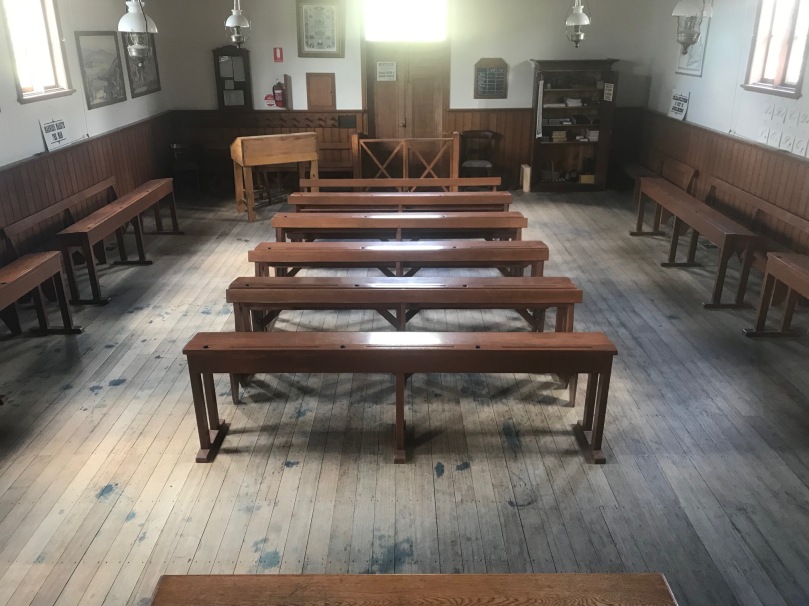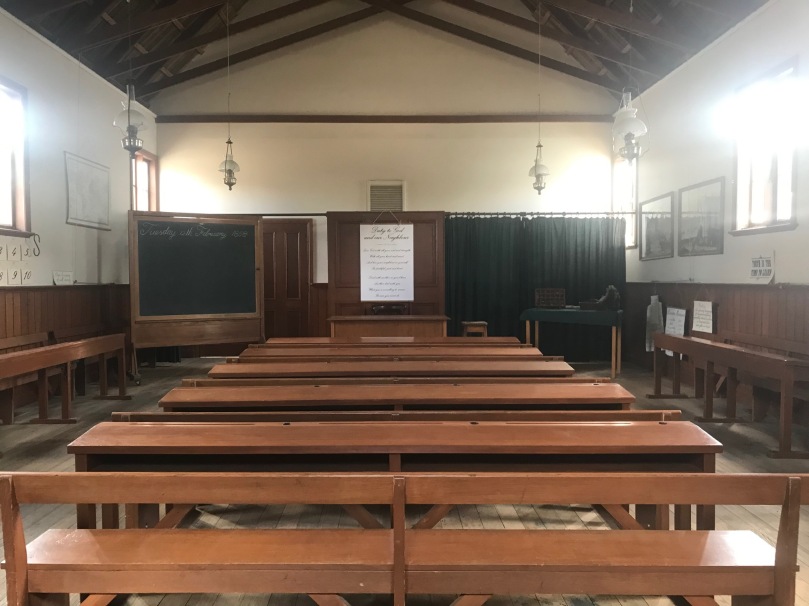In the recreated 1850s classroom where I teach, I immerse modern students in an experience of what school and life may have been like for children on the gold fields. We aim for historical accuracy as much as possible, but also make accommodations to meet the contemporary needs of children, as well as modern legal and moral rights.
Gender roles and discrimination in education are something that very quickly become apparent as children step into the role of 1850s children. They are divided by their gender for clothing, lessons and rules. In my school, the girls are not allowed to run or squat on the ground to play marbles. They must learn needlework while the boys learn technical/mathematical drawing. They are also excluded from discussions about jobs for their future, due to its irrelevance to their expected future roles as wives and mothers.
Interestingly, not being able to run seems to elicit the loudest protests and mutterings of disbelief.
These experiences provoke some of the most thoughtful and considered discussions I’ve heard from primary school children. Meaningful discussions with their classroom teachers often ensue while they are out at play. I’ve even had quite a few plucky kids stand up to me and tell me “you’re being very sexist” or “that’s so unfair!” While I outwardly admonish them in character – on the inside my heart sings! At the conclusion of the experience I try to elicit further reflection and discussion on these topics.
I’ve now decided to take a further step to provoke children into questioning the meaning and impact of some of the active discrimination that historically took place in education. I have changed the layout of my classroom to have the girls at a very obvious physical and mental disadvantage to the boys.

Drawing inspiration from this painting by Swiss artist Albert Anker (1896), I have placed the girls desks on the side of the classroom with the boys at the front and center. The girls will not be able to see as well, nor will they receive as much of my focused attention. They are placed to the side to reflect the belief of the time that their academic education was not as important as the boys; they can be there when space and finances allow, but their education is more incidental and less deliberate.
Classes return next week and I look forward to observing the children’s reactions and leading discussions with them after their experience to see what impact it has on their understandings of 19th century values and gender roles.


[…] have previously written about how I have provoked thinking about gender roles. I have also written about the challenges of addressing sensitive topics such as racial […]